6 reasons you want a flip foldable like the Galaxy Z Flip 5 or Motorola Razr instead of an iPhone
Dynamic what?! My phone folds in half!
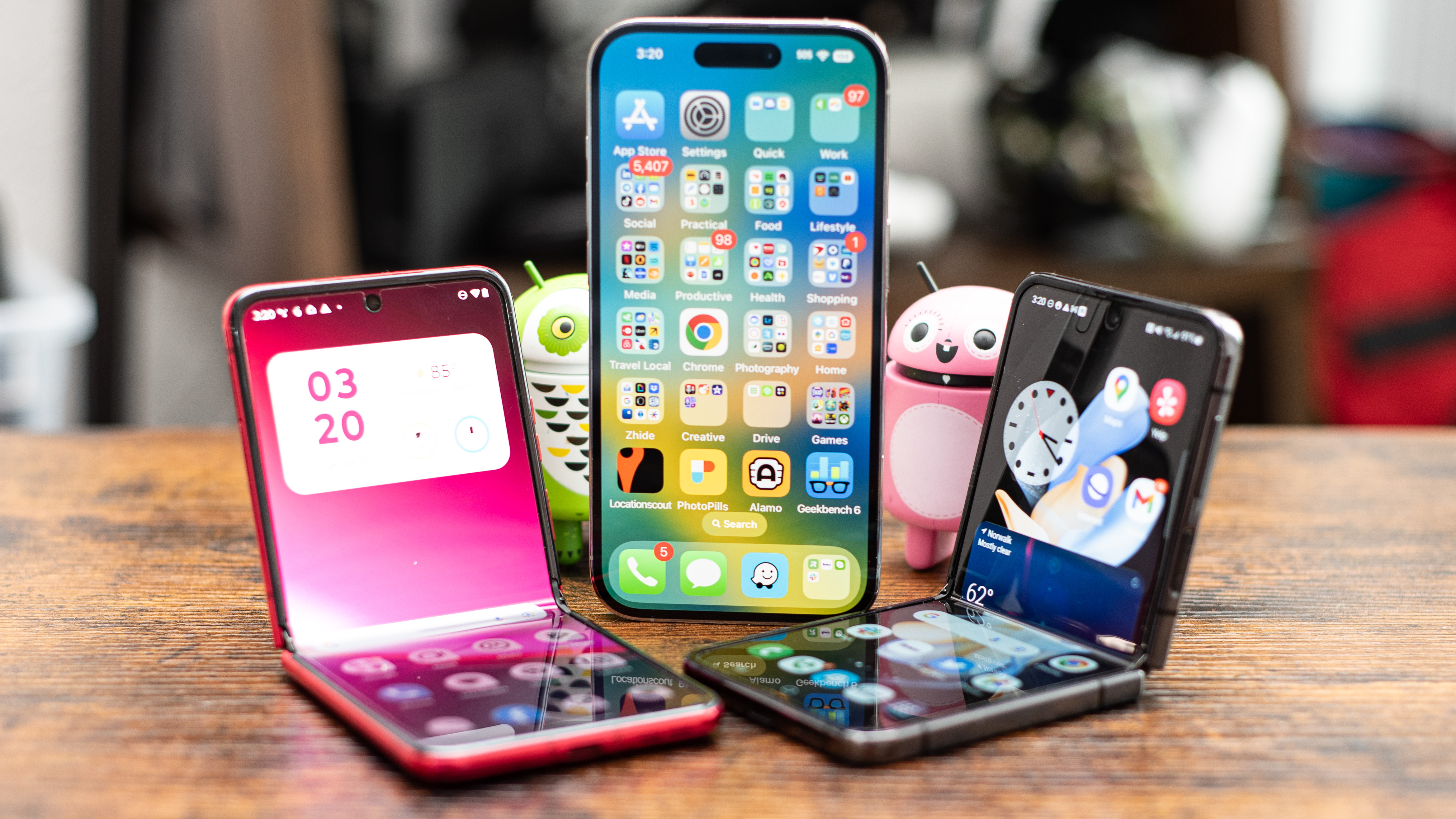
New phone season is officially upon us, as Samsung readies its Galaxy Z Flip 5 and Galaxy Z Fold 5 for launch, earlier than last year. Apple will soon follow with an iPhone 15 family, then more from Google and OnePlus. If you’re excited about the new iPhone, you probably haven’t considered a foldable, but you really should. The best foldable phones, especially compact flip phones, have features that would please even the most ardent iPhone fanatics.
Update: Samsung’s new devices are now official, and you can now check out our hands-on Samsung Galaxy Z Fold 5 review and hands-on Samsung Galaxy Z Flip 5 review for our early impressions of these devices, and our early Samsung Galaxy Watch 6 review and early Samsung Watch 6 Classic review for our initial verdicts of the wearables after our time with them so far.
We’ve also got our hands-on Samsung Galaxy Tab S9 review and initial Samsung Galaxy Tab S9 Ultra review, for our first impressions of the tablets.
If you hadn’t considered a Motorola Razr phone since the early aughts, or if Moto’s iconic flip phone was before your time, I’m pleased to report the company is making a comeback, and the new Razr Plus and more affordable Razr are worth a look.
Of course, Samsung sells one of the most feature-packed and refined flip phones in the Galaxy Z Flip 4, and we've finally gotten hands-on time with the brand-new Galaxy Z Flip 5, as well. If you’ve never bent a phone in half or if the crease scares you off, never fear! Here are some reasons to head to a store and try one of these flip phones for yourself.
1. You don’t need to hide your phone in a case
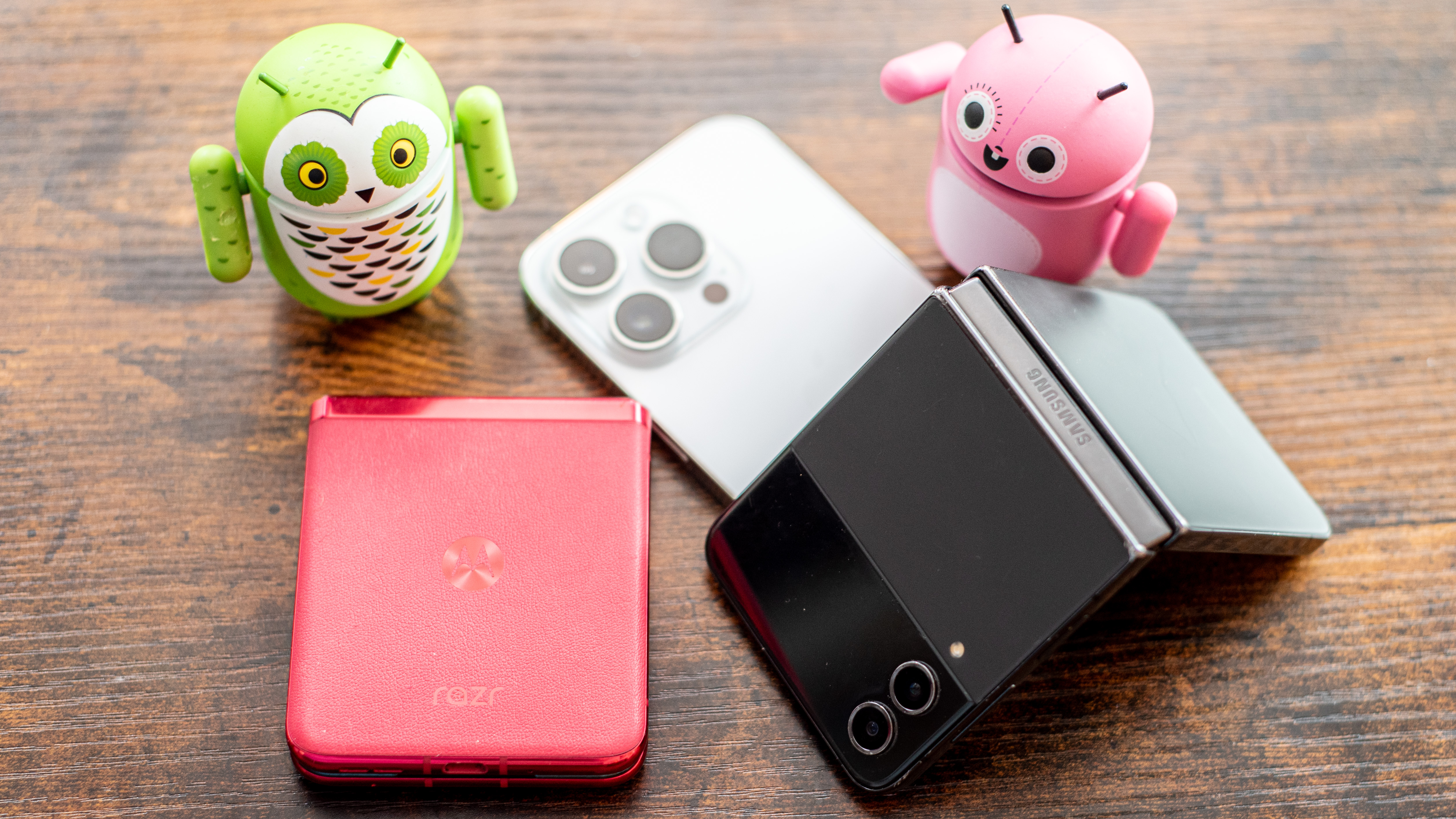
I’ve used flip phones and iPhones as my personal phone, and while I labored over finding the best iPhone case as soon as I bought my iPhone 14 Pro (Apple Silicone to start), I didn’t even bother with my Galaxy Z Flip 4 or Motorola Razr Plus. Whenever I wasn’t using the phone, I just closed it, and the screen was protected.
It may be counterintuitive, but foldable screens are actually quite durable. They aren’t very scratch-resistant, and you can mark them with a sharp fingernail, but they are highly impact-resistant. And that’s if the internal display is open, which it usually isn’t when I’m putting the phone away.
Sign up for breaking news, reviews, opinion, top tech deals, and more.
When the phone is closed it’s protected by the back. On the Motorola Razr (and the magenta Moto Razr Plus), that’s a very nice ‘vegan leather’ finish that feels great and seems like it should be more durable than glass. Even on the glass Razr Plus and Galaxy Z Flip 4, it’s a stronger Gorilla Glass Victus panel, so it should be able to take a few drops without breaking.
2. Your friends won't have the same exact phone
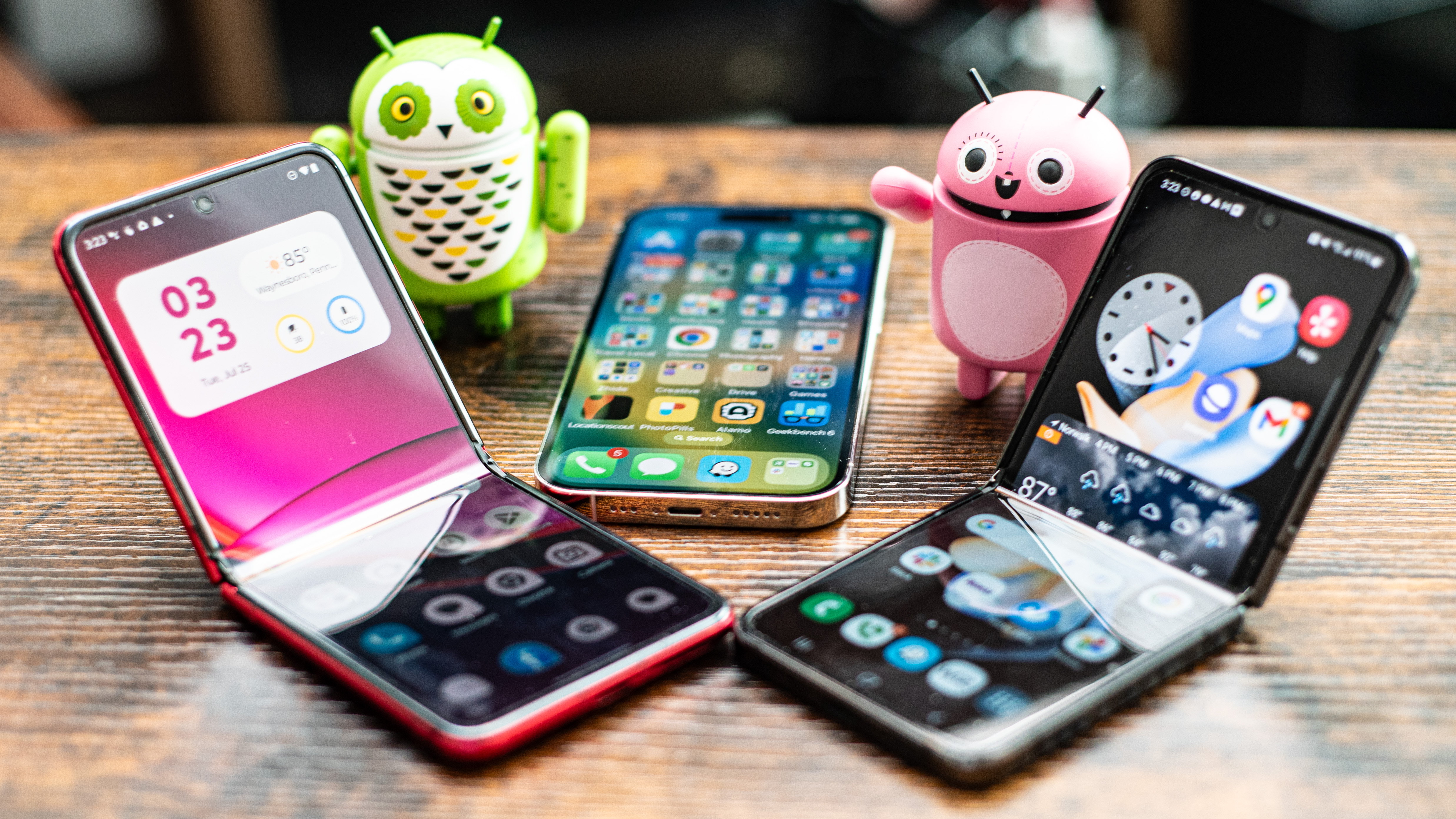
Right now there are basically two types of iPhones - the ones with the Dynamic Island, and the ones without. That’s how you know what iPhone somebody has. There’s nothing else to show off unless you’re a big fan of Apple’s sad purple. Pull out any other phone and you have to work to explain what makes it great. These are all black slabs of glass and aluminum, after all.
Something different happens when you unfold a Galaxy Z Flip 4 or Moto Razr in iPhone company. Heads turn. People want to see you do that again. You can pass it around so they can try it for themselves. They’ll complain about the crease, but you don’t notice it’s there. They’re just being jealous.
How long has it been since a phone was exciting in a crowd? It’s fun to show off a flip phone because the flip is very much more than a gimmick. It’s a real feature that makes the phone nicer to use.
3. Using the cover display feels like Star Trek
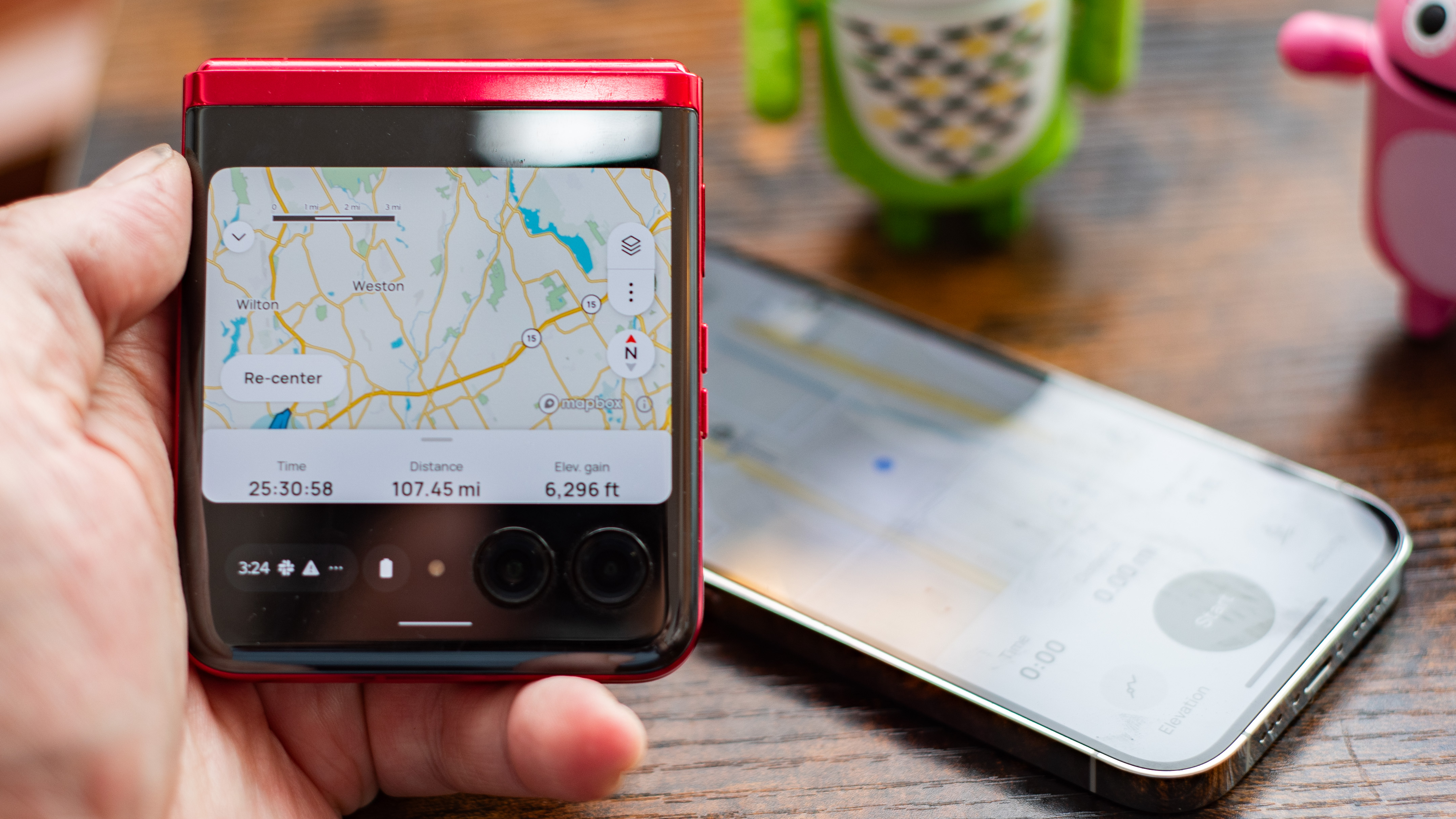
Using the Motorola Razr Plus closed and relying on just the cover display makes the phone feel like an entirely new category of gadget. It’s compact enough to fit in your palm but powerful enough to navigate trail maps or take selfie photos with the phone’s main camera. It feels more friendly and less obtrusive than a massive smartphone. Don’t worry, you still get a massive smartphone when the Razr is open.
I haven’t gotten a chance to check out the highly-anticipated Galaxy Z Flip 5, but it should hopefully offer a similar experience. Samsung has shown it in silhouette, but we don’t have the official details. It should come with a big cover display similar to the Razr Plus. The upgrade from last generation's postage-stamp windows to these larger cover screens is a game changer for flip phones. The category has finally matured.
4. You get much more screen in a phone that is smaller

Pop quiz: Which do you think has a bigger display - Apple’s big iPhone 14 Plus or Samsung’s compact Galaxy Z Flip 4? Of course, it’s a trick: they are the same size at 6.7 inches. Actually, Samsung manages the same screen size in a phone that isn’t just foldable, it’s also thinner and lighter than the iPhone 14 Plus when it’s open.
Motorola Razr Plus is even larger than those phones, with a 6.9-inch display in a body that is thinner than the Galaxy Z Fold 4 when folded in half, thanks to a new hinge design that we expect Samsung will match in the next generation. The phones are about the same when open.
The difference is that the iPhone 14 Plus feels like a big iPhone, but the flip phones feel compact and easily pocketable. Slap a case on that iPhone and it adds even more bulk, while the Moto Razr looks better in the buff.
5. Unique camera angles make your selfies stand out
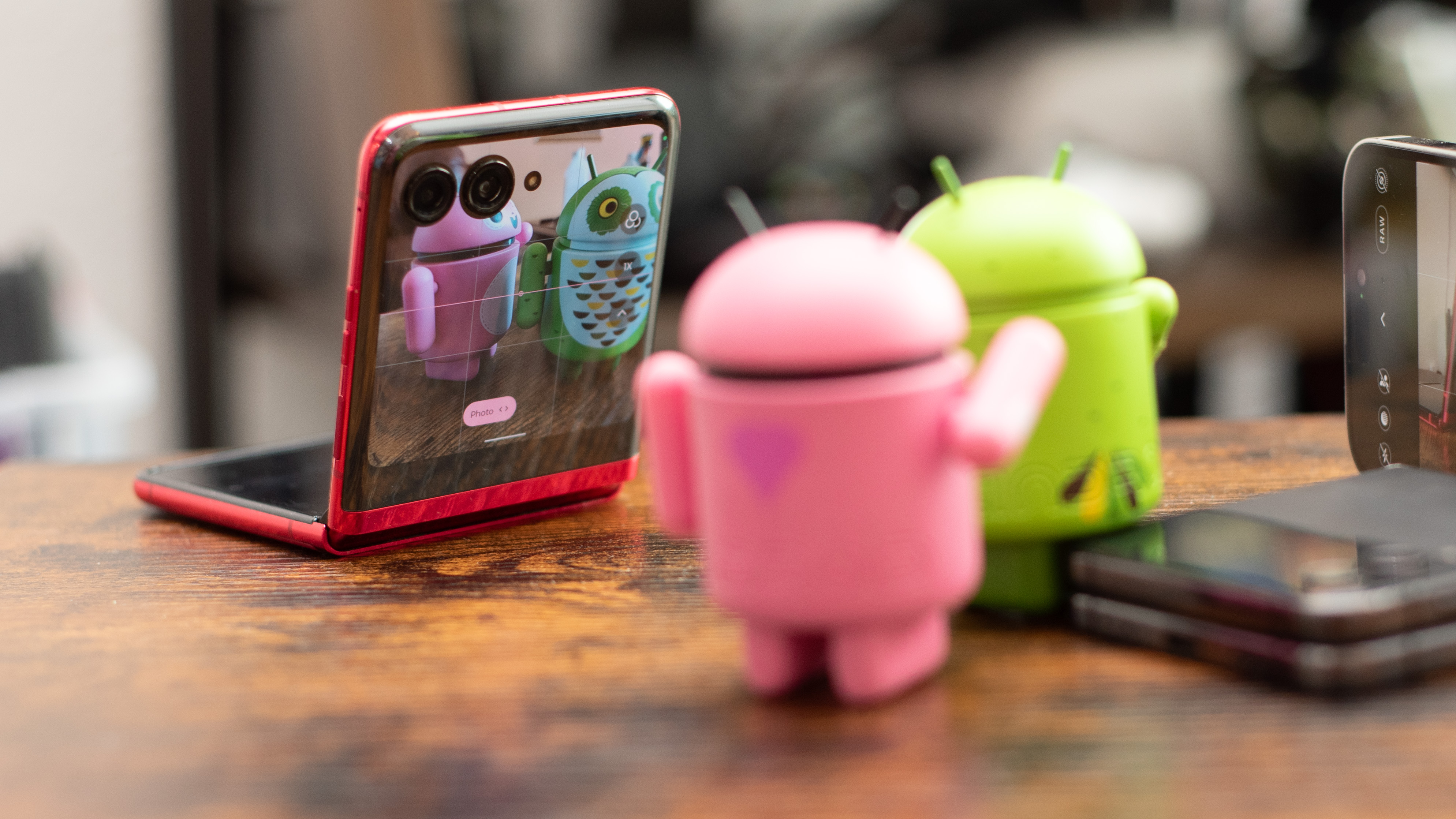
The most boring photos are the ones everybody takes. Hold the phone at eye level and shoot what you see, and you’ll have the same picture every time. If you want something different, you need to change your perspective. Put the camera in an unusual spot, aimed at a unique angle. Then you’ll have a photo worth sharing.
With a flip phone, you don’t need a stand or a tripod to make this happen. The phone is built to bend. You can position and aim the cameras in unique ways, and you’ll be able to see yourself on the cover display so you know the shot comes out looking cool.
Admittedly, the camera on today’s flip phones can’t match the best iPhone cameras, but they easily beat the iPhone’s selfie cameras, and on flip phones you can use the main camera as your selfie cam. If you like to snap moments and share, flip phones will give you a new way to remember.
6. You can find them on sale (for less than an iPhone 14 Plus)
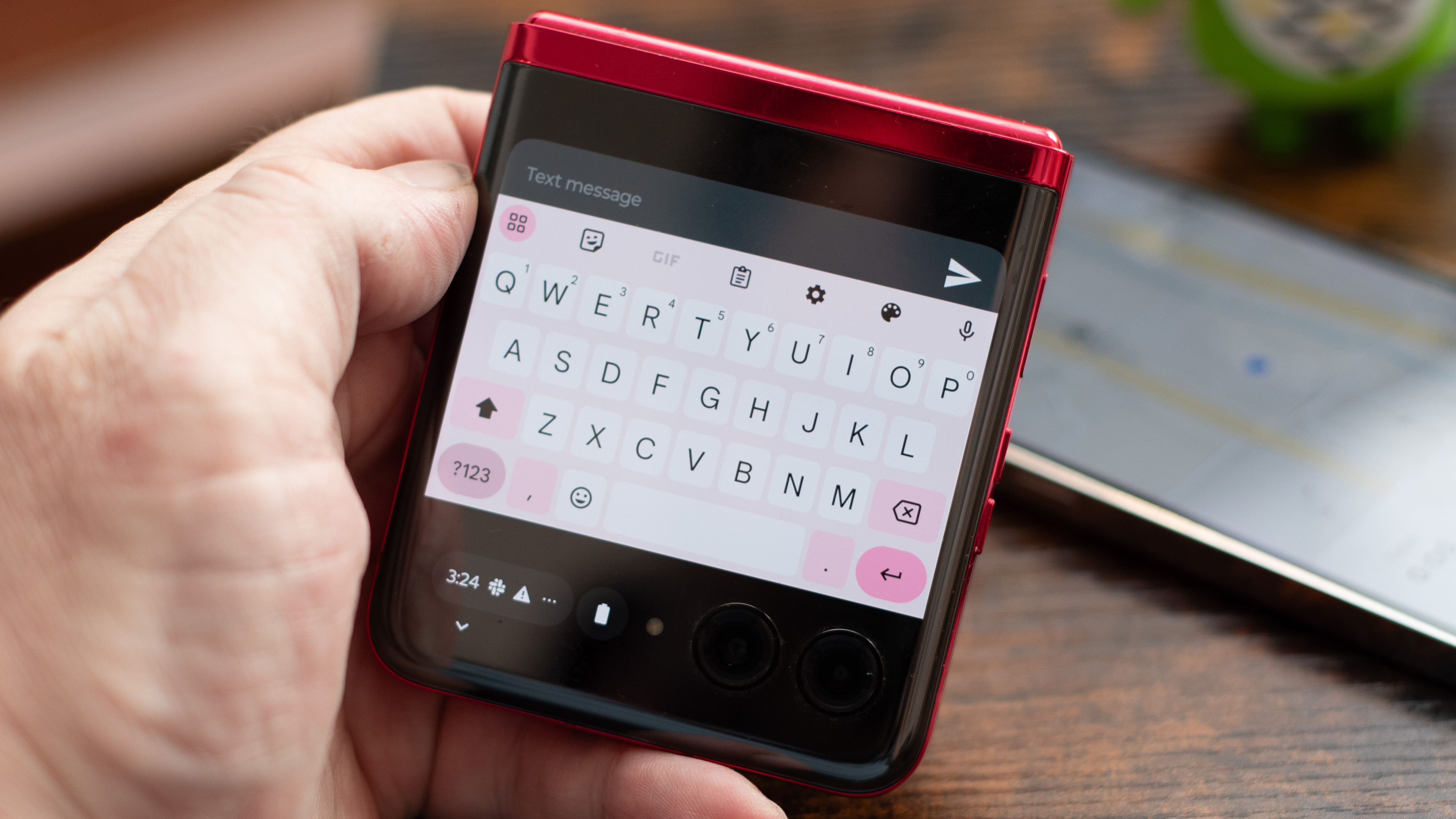
Foldable phones are expensive, but they used to cost much more than they do today. A brand new foldable phone costs around $999.99 / £1,049.99 / AU$1,499, but we’ve already seen hefty sales that drop the price even lower. In the US, you could buy a new Razr Plus for around $850 on Amazon Prime Day, which is only a couple of months after launch.
A new Apple iPhone 14 Plus costs $899 / £949 / AU$1,579, so a good sale will bring the Moto Razr Plus price under the cost of the iPhone. The base model Motorola Razr will be even less expensive, but you won’t get the cover display, which is a great feature.
When Samsung launches its new Galaxy Z Flip 5, we can hope for a price cut but won’t be holding our collective breath. Still, Samsung offers great deals on trade-ins at launch, and its phones are sold through wireless carriers, which tend to offer deals with long-term payment plans.
Compared to an iPhone, a foldable phone like the Moto Razr Plus gives you a whole extra screen on the outside, one that is as big as the first iPhone’s display. You don’t get the camera quality, but the extra screen real estate more than makes up for the value.
- If you’re still not convinced, head over to our list of the best foldable phones to see what the fuss is about
- If you’re definitely waiting to see what Apple has in store, here’s everything we know about the iPhone 15 family coming soon

Starting more than 20 years ago at eTown.com. Philip Berne has written for Engadget, The Verge, PC Mag, Digital Trends, Slashgear, TechRadar, AndroidCentral, and was Editor-in-Chief of the sadly-defunct infoSync. Phil holds an entirely useful M.A. in Cultural Theory from Carnegie Mellon University. He sang in numerous college a cappella groups.
Phil did a stint at Samsung Mobile, leading reviews for the PR team and writing crisis communications until he left in 2017. He worked at an Apple Store near Boston, MA, at the height of iPod popularity. Phil is certified in Google AI Essentials. His passion is the democratizing power of mobile technology. Before AI came along he was totally sure the next big thing would be something we wear on our faces.